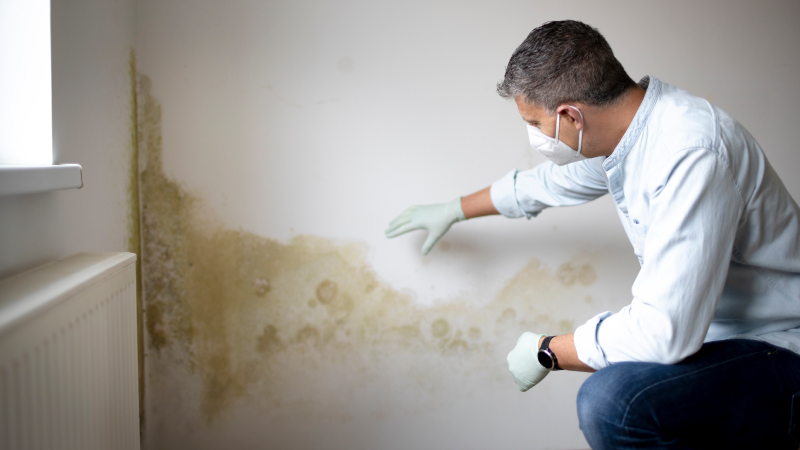What is mold? This question may seem simple at first glance, but the truth is that mold is a complex organism that can have serious implications for our health and our homes.
Unveiling the Mystery: What Is Mold?
Mold is a form of fungus, not unlike mushrooms and yeast, that plays a crucial role in the environment by breaking down dead materials. It sets itself apart by its method of reproduction, dispersing tiny, lightweight spores through the air. These spores are omnipresent, both indoors and outdoors, and when they land on damp surfaces, they have the potential to grow and multiply. Mold’s diversity is vast, encompassing an array of species each with unique characteristics. This diversity is evident in the spectrum of colors and textures mold exhibits, from velvety to slimy surfaces, spanning shades of black, green, white, and even pink. Despite its ubiquity, mold remains shrouded in mystery for many, largely because it often thrives in hidden spaces where it can proliferate unnoticed until it becomes a significant problem. Understanding mold’s basic nature and its requirements for growth is the first step in mitigating its impact on our homes and health.
The Causes Behind Mold Growth in Our Spaces
Mold thrives in environments where moisture is prevalent. This can often be found in areas of our homes that are exposed to water or where humidity levels are consistently high. Common hotspots for mold growth include bathrooms and kitchens, due to the presence of plumbing fixtures and the activities that occur in these spaces, which introduce moisture into the air. Similarly, basements and attics can become breeding grounds for mold if they lack proper ventilation or if water seeps in through foundation cracks or roof leaks. Additionally, the buildup of condensation on windows or pipes, especially during colder months, can provide the necessary moisture for mold to establish itself. Homes with poor insulation may also see more mold growth, as this can lead to cold surfaces where condensation forms. Understanding that moisture control is key to preventing mold can guide homeowners in taking proactive steps, such as improving airflow and fixing water-related issues promptly, to maintain a healthier living environment.
Identifying Different Types of Mold
Mold encompasses a wide spectrum of species, each with its own distinct appearance and potential health risks. Recognizing the different types can aid in assessing the severity of a mold issue and determining the urgency of remediation efforts. Some common household molds include Aspergillus, often found on food and in air conditioning systems, which can cause allergic reactions and respiratory infections. Cladosporium, typically seen on fabrics and wood surfaces, can trigger allergic responses but usually does not pose serious health threats. Penicillium, with its distinctive blue or green color, thrives in water-damaged materials and can produce allergens and toxins. Stachybotrys, commonly referred to as “black mold,” is particularly concerning due to its association with severe health problems, including respiratory issues and toxic effects. It prefers chronically damp environments, such as those affected by water leaks or high humidity. Knowing the answer to the question, “What is mold?” and being able to identify the specific type of mold present are crucial for understanding the potential health implications and for formulating an effective removal strategy. Each species requires a tailored approach to ensure complete eradication from the environment, underscoring the importance of professional assessment and intervention in cases of significant mold infestation.
Health Implications Exposure
The health effects of coming into contact with mold can vary greatly among individuals, largely dependent on the type of mold involved and a person’s sensitivity or allergy to it. Some may experience relatively minor reactions, such as nasal stuffiness, eye irritation, or skin rash. Others, particularly those with underlying respiratory conditions, may suffer more severe consequences including wheezing, shortness of breath, and persistent coughing.
For those with compromised immune systems or chronic lung illnesses, mold exposure poses a significant risk. It can lead to serious infections in the lungs that could exacerbate existing health issues. Moreover, prolonged exposure to certain types of mold—such as the infamous Stachybotrys chartarum, commonly known as black mold—has been linked to more serious and longer-term health conditions. These include upper respiratory tract symptoms, and in some severe cases, can lead to neurotoxic effects such as memory loss and headaches.
It’s important to recognize that children, the elderly, and individuals with preexisting health conditions are particularly vulnerable to the effects of mold exposure. Ensuring that indoor environments remain mold-free is crucial for safeguarding the health of all occupants, highlighting the importance of addressing any signs of mold growth promptly and effectively.
ProKleen’s Professional Tips Prevention and Removal
Keeping your environment mold-free begins with a vigilant approach to moisture management. Address any plumbing issues or leaks immediately, as these can create ideal conditions for mold growth. Ensure your home is properly ventilated, particularly in areas like the kitchen, bathroom, and laundry room where moisture is a common byproduct of everyday activities. Utilizing exhaust fans and opening windows can significantly improve air circulation, reducing humidity levels. In addition, consider investing in a high-quality dehumidifier for areas prone to dampness, such as basements, to maintain humidity levels below 60%.
Routine maintenance checks around your home can also prevent mold from taking hold. Inspect window seals and doorways for signs of condensation and water intrusion, which can be entry points for moisture. Proper insulation can prevent cold spots where condensation tends to accumulate, another preventive measure against mold growth.
Should you encounter mold, tackling it promptly is crucial to prevent its spread. While small areas affected by mold can sometimes be addressed with DIY solutions, larger infestations require professional expertise. ProKleen specializes in comprehensive mold removal services, utilizing advanced techniques and tools to ensure thorough eradication. Our experts are trained to identify the source of the problem, remove the mold safely, and provide recommendations for preventing future growth, thereby protecting your home and health from the adverse effects of mold exposure.

